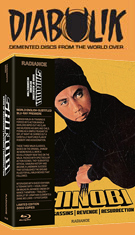
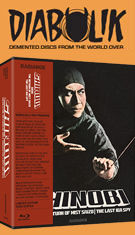
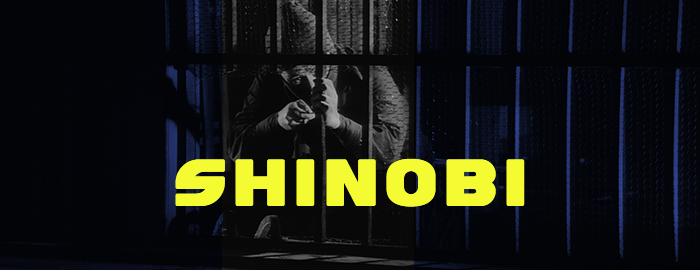
SHINOBI: BAND OF ASSASSINS
Color, 1962, 104 mins. 27 secs.
Directed by Satsuo Yamamoto
Starring Raizô Ichikawa, Shiho Fujimura, Yûnosuke Itô, Katsuhiko Kobayashi, Tomisaburô Wakayama
SHINOBI: REVENGE
Color,
1963, 93 mins. 19 secs.
Directed by Satsuo Yamamoto
Starring Raizô Ichikawa, Sô Yamamura, Shiho Fujimura, Mikiko Tsubouchi
SHINOBI: RESURRECTION
Color, 1963, 85 mins. 56 secs.
Directed by
Kazuo Mori
Starring Stars Raizô Ichikawa, Ayako Wakao, Eijirô Tôno, Masao Mishima, Saburô Date
SHINOBI: SIEGE
Color, 1964,91 mins. 22 secs.
Directed by Tokuzô Tanaka
Starring Raizô Ichikawa, Midori Isomura, Ganjirô Nakamura, Tomisaburô Wakayama
SHINOBI: RETURN OF MIST SAIZO
Color, 1964, 87 mins. 19 secs.
Directed by Kazuo Ikehiro
Starring Raizô Ichikawa, Yukiko Fuji, Shiho Fujimura, Tomisaburô Wakayama
SHINOBI: THE LAST SPY
Color,
1965, 88 mins. 59 secs.
Directed by Kazuo Mori
Starring Raizô Ichikawa, Kaoru Yachigusa, Isao Yamagata, Mizuho Suzuki
Radiance Films (Blu-ray) (US/UK RA/B HD), AnimEigo (DVD) (US R1 NTSC), Kadokawa (DVD) (Japan R1 NTSC) / WS (2.35:1) (16:9)
Before ninjas exploded into the worldwide 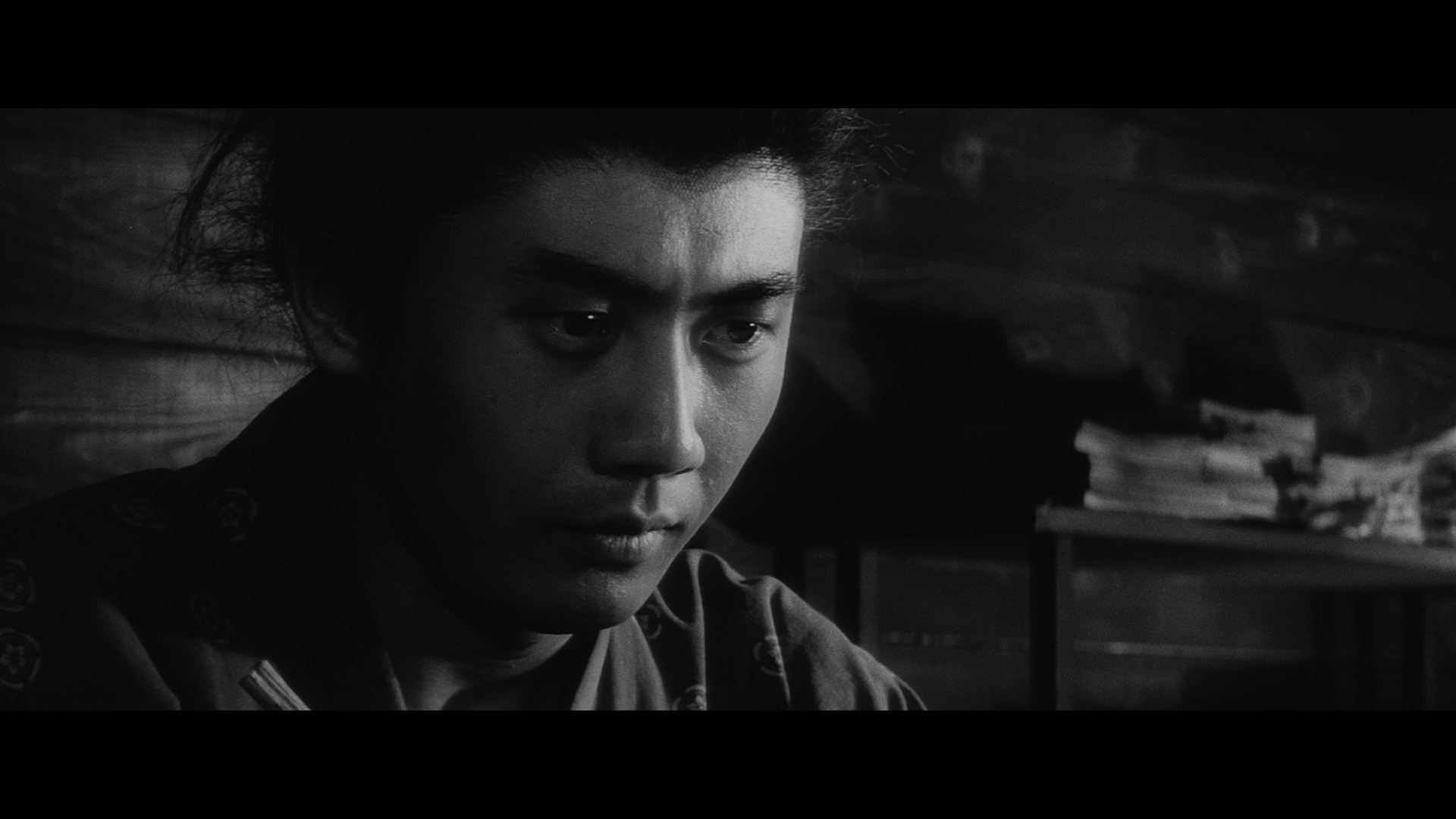 consciousness with 1967's James Bond adventure You Only Live Twice and went on to
consciousness with 1967's James Bond adventure You Only Live Twice and went on to 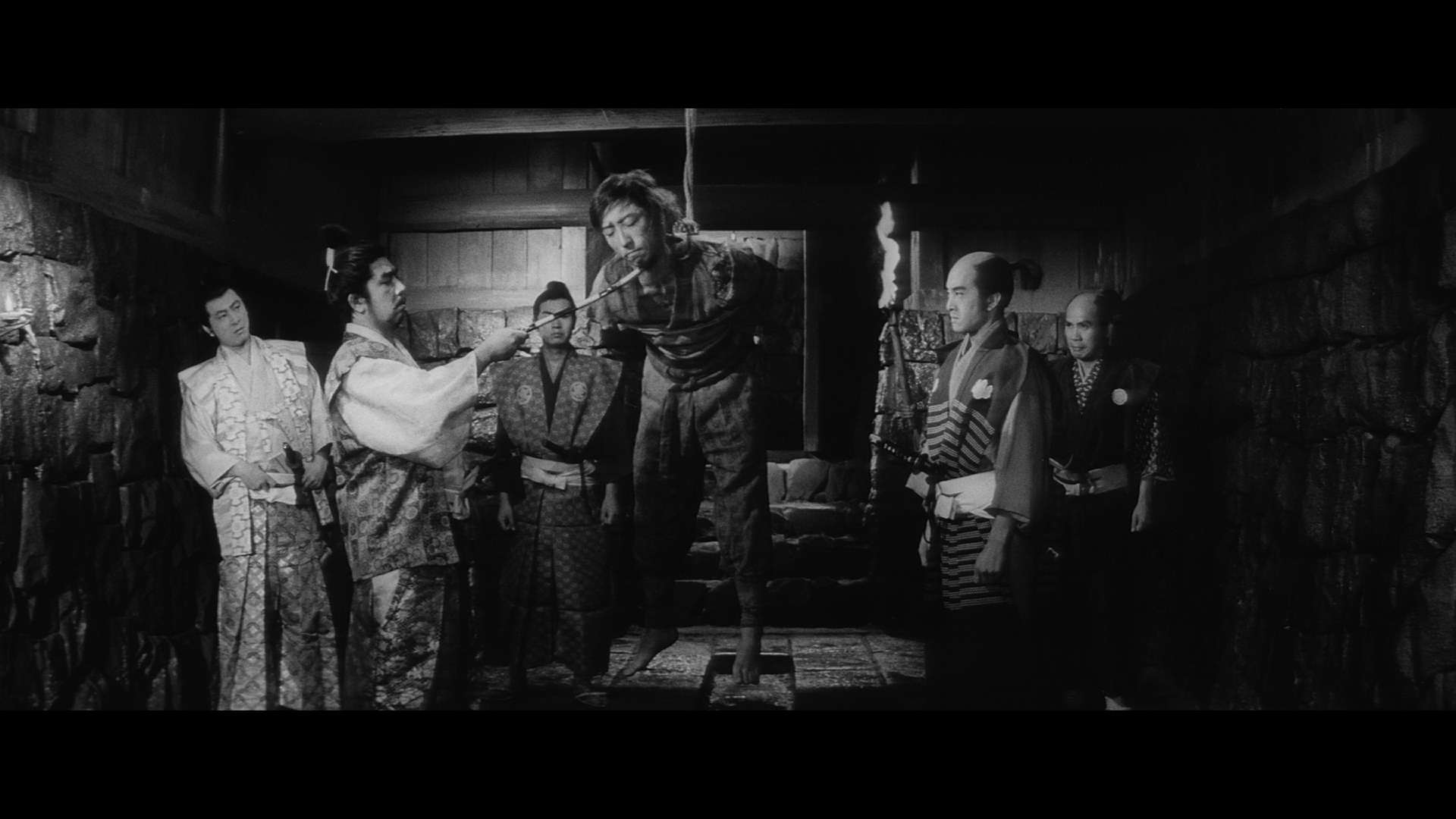 capture the imaginations of '80s kids with beloved teenage mutant turtles and Cannon Films starring Sho Kosugi, Japanese audiences were already very familiar with everyone's favorite stealthy black-clad killers. One of the most popular out of the gate was Daiei's Shinobi series which, in the finest tradition of Sleepy Eyes of Death, Zatoichi, Lone Wolf and Cub, etc., spread out its hero's blood-spattered tales over a string of films in a compact period of time. In this case it amounted to nine films (sort of, with a reboot of sorts in 2005 and a now mostly lost '60s TV show), six of which made their English-friendly Blu-ray debuts in 2025 from Radiance Films as a pair of collections.
capture the imaginations of '80s kids with beloved teenage mutant turtles and Cannon Films starring Sho Kosugi, Japanese audiences were already very familiar with everyone's favorite stealthy black-clad killers. One of the most popular out of the gate was Daiei's Shinobi series which, in the finest tradition of Sleepy Eyes of Death, Zatoichi, Lone Wolf and Cub, etc., spread out its hero's blood-spattered tales over a string of films in a compact period of time. In this case it amounted to nine films (sort of, with a reboot of sorts in 2005 and a now mostly lost '60s TV show), six of which made their English-friendly Blu-ray debuts in 2025 from Radiance Films as a pair of collections.
The violent 16th-century saga based on the writing of Tomoyoshi Murayama begins with Shinobi: Band of Assassins which starts in the devastating aftermath of a 1573 scorched earth attack by Oda Nobunaga (Ogami Itto himself, Wakayama, a recurring face in these) to decimate the allied forces against him. One survivor is our protagonist Ishikawa Goemon (Ichikawa), a young ninja whose ambition doesn't sit too well with his father. Goemen's general, Momochi (Itô),turns to be a primary cause for concern since he wants to frame Goemon for the murder of his wife and conscript him into doing 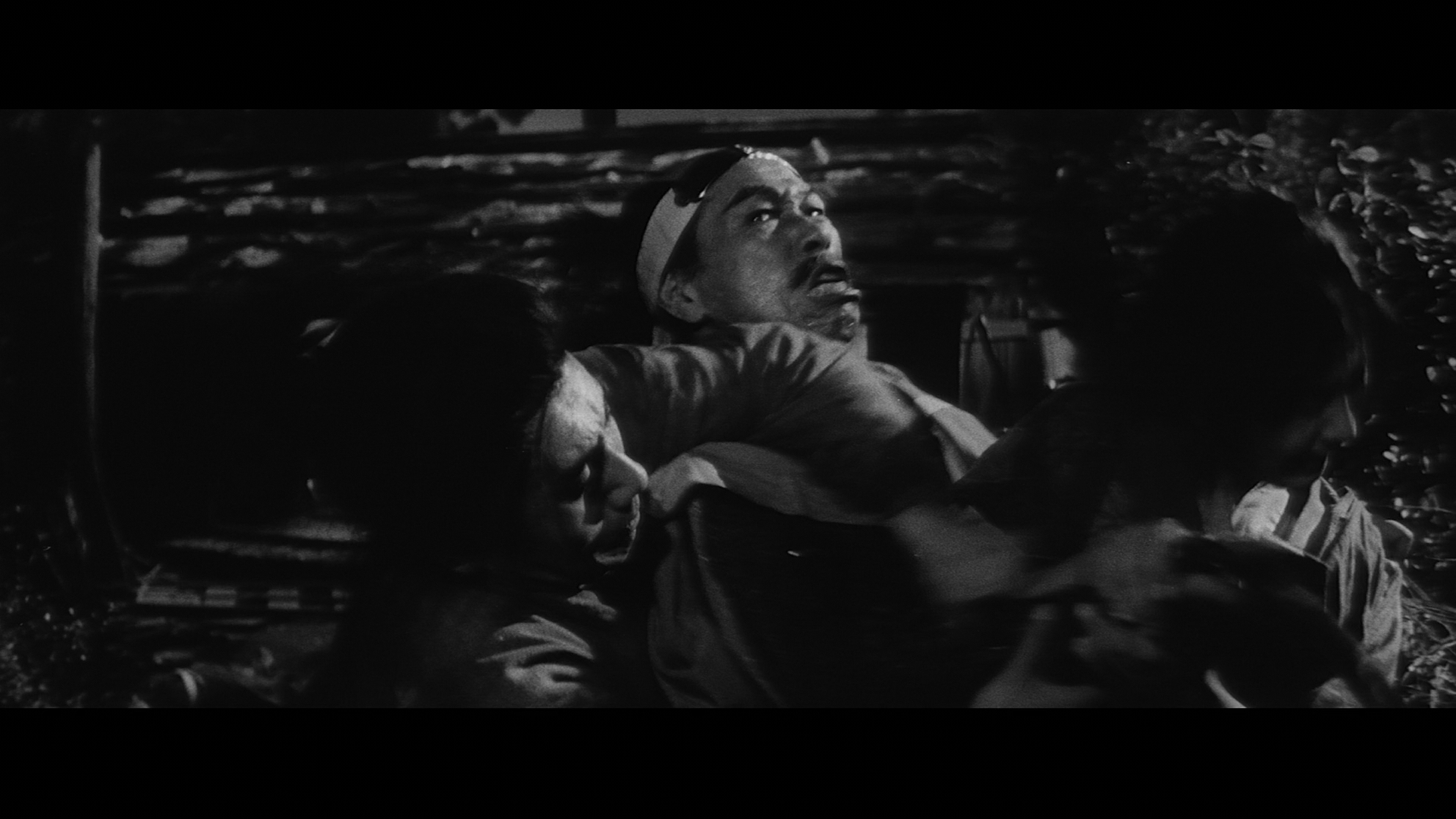 his dirty
his dirty 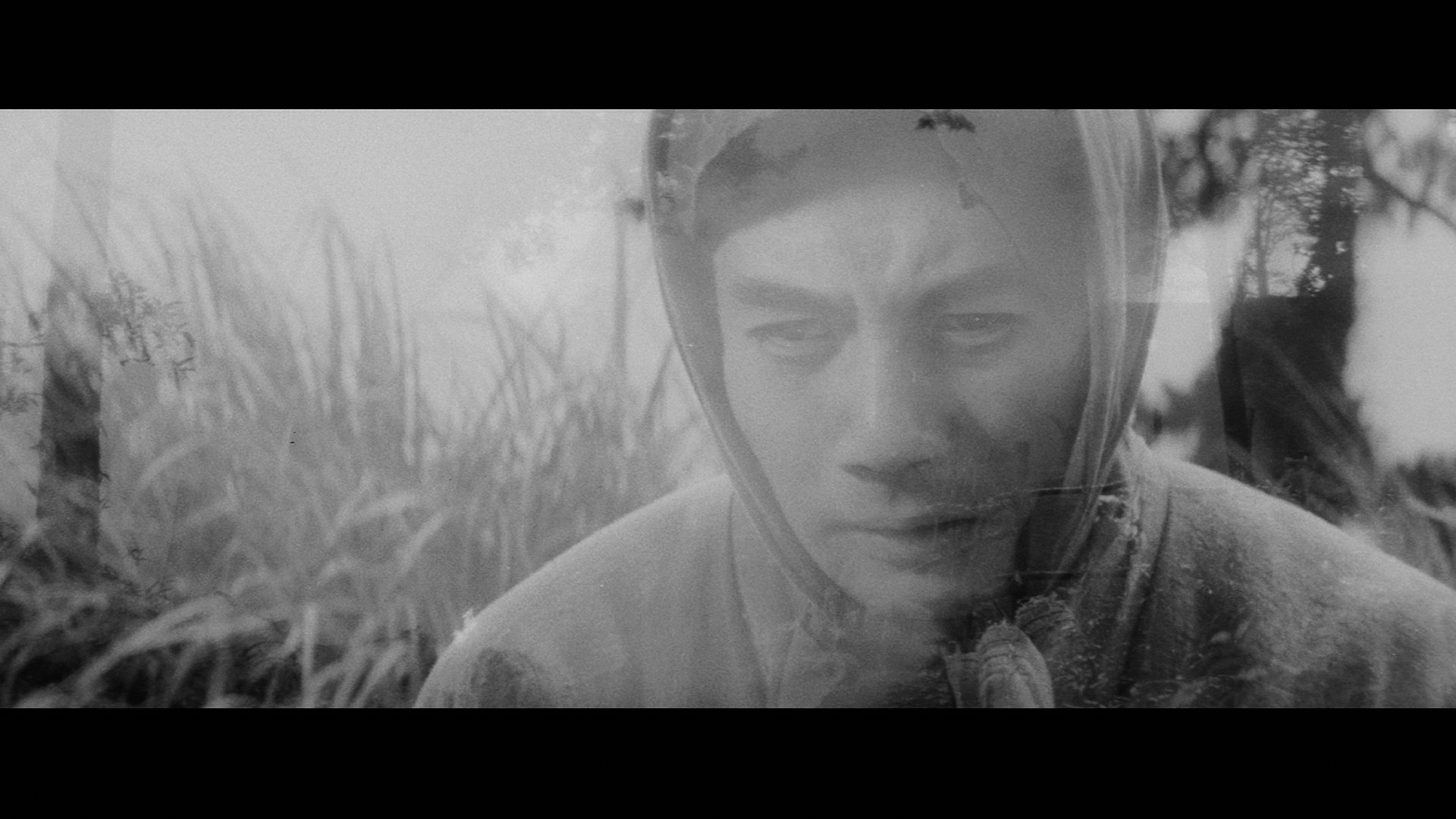 work. The first half or so is essentially a standard historical action drama with plenty of twists and double crosses, but once the ninja outfit and weapons get broken out, it's easy to see why this one stood out from the pack.
work. The first half or so is essentially a standard historical action drama with plenty of twists and double crosses, but once the ninja outfit and weapons get broken out, it's easy to see why this one stood out from the pack.
The film's director, Satsuo Yamamto, stuck around for the second and last time to quickly dive into the sequel, Shinobi: The Revenge, which amps up the brutality as you might expect from the title. At this point it's best if you watch these films without a lot of plot setup as they're easy to spoil, but the catalyst here is a horrific act against Goemon's family that has him pulling out everything in his arsenal -- from covert break-ins to note passing to all-out assaults on horseback -- to get payback against Oda's yes men. The film is very well directed by Yamamto with a nice eye for texture (plus bigger battle scenes), and it all climaxes in a very dark development that feels like the series drawing to a definitive close. That didn't stop them from making a third film, Shinobi: Resurrection, which switches directors to Kazuo Mori 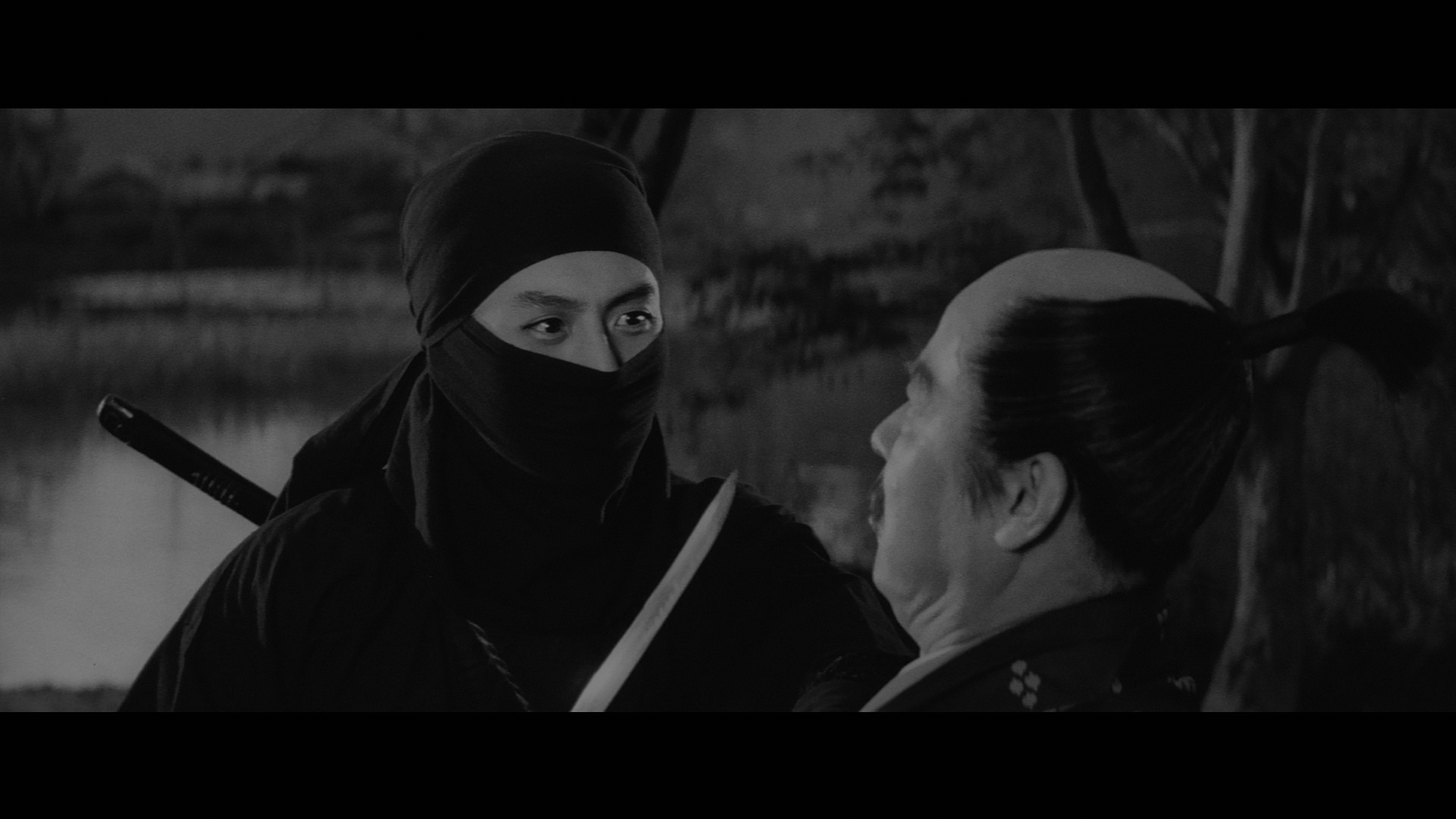 with our headstrong ninja
with our headstrong ninja 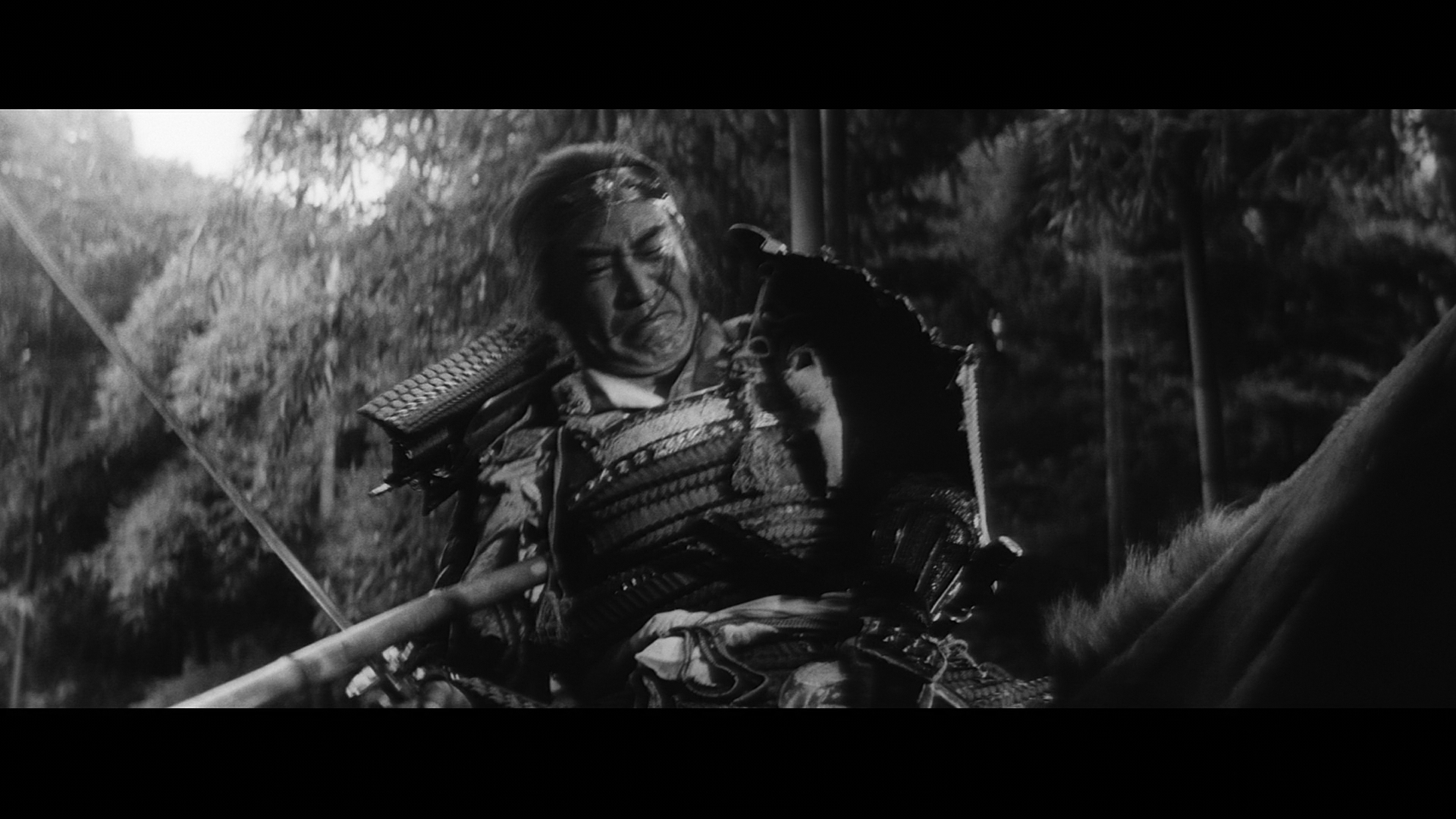 determined now more than ever to take out the brutal overlord in his increasingly guarded castle. Meanwhile Goemon is being steered unknowingly as part of a larger political power play, which naturally all leads to an elaborate nocturnal siege and a culmination of the saga as a whole. Added into the mix in a pivotal supporting role is Hattori Hanzō (Date), the real-life general and expert fighter whose name should ring a bell for many reasons with Sonny Chiba fans.
determined now more than ever to take out the brutal overlord in his increasingly guarded castle. Meanwhile Goemon is being steered unknowingly as part of a larger political power play, which naturally all leads to an elaborate nocturnal siege and a culmination of the saga as a whole. Added into the mix in a pivotal supporting role is Hattori Hanzō (Date), the real-life general and expert fighter whose name should ring a bell for many reasons with Sonny Chiba fans.
This initial set (which comes with six postcards of promotional material) places films one and two on the first Blu-ray along with an interview with Shozo Ichiyama, artistic director of the Tokyo International Film Festival (14m5s), about Satsuo Yamamoto including the social issues he addressed across his films regardless of genre as well as the labor issues that affected his early films at Toho and his jump to Daiei. The second Blu-ray features film three along with "A Brief History of Japanese Ninja Films" (18m11s) by Mance Thompson, which traces the evolution of these titles from the silent era (most of which is lost) through kabuki theater through numerous films 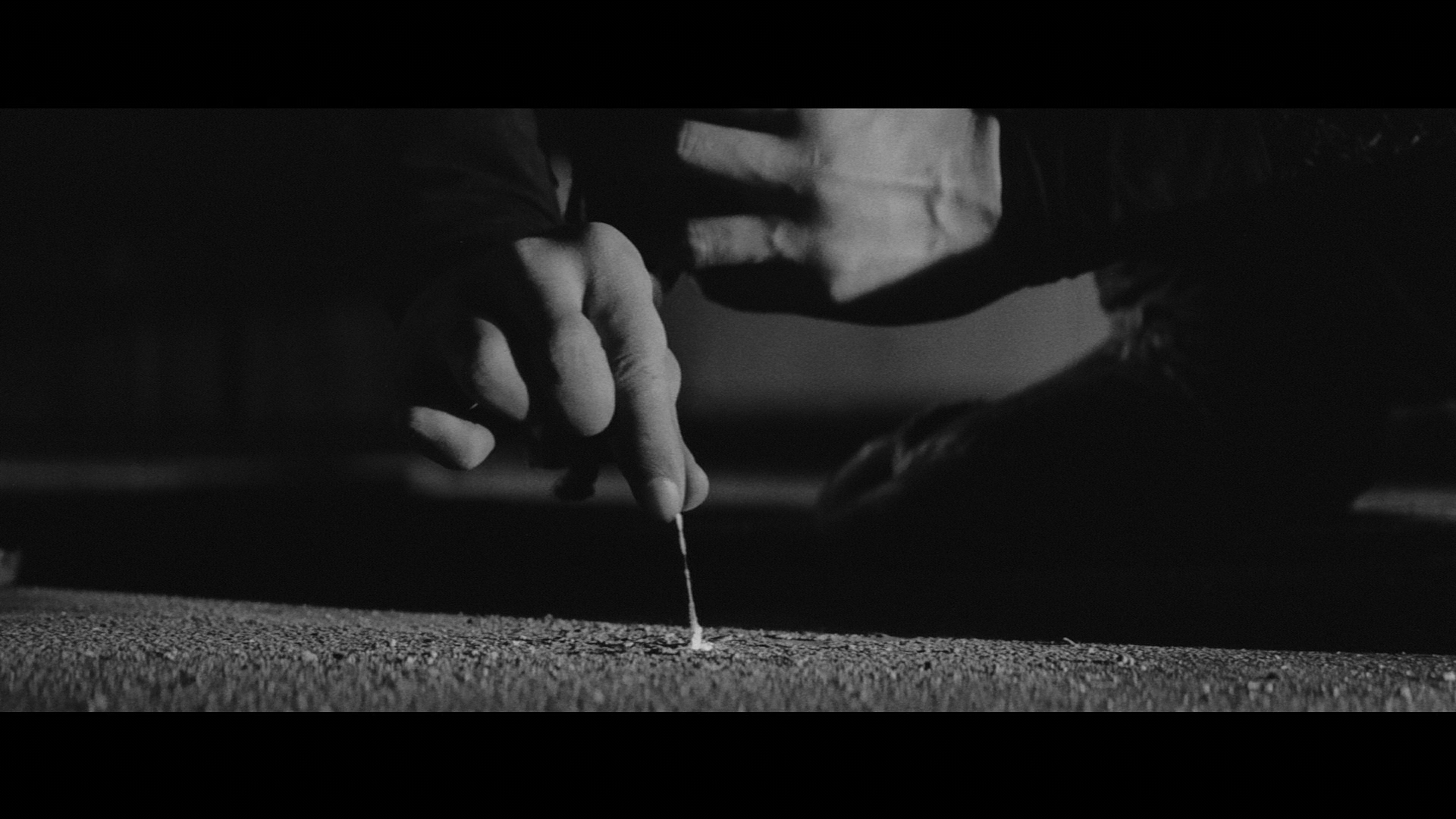 geared for audiences ranging from kids to women to action-loving men, with an obvious lengthy gap during World War II before it escalated in terms of realism and mayhem in the '50s and even led to the "sexy female ninja" variant. You also get an interview with film critic Toshiaki Sato (14m18s) on Raizo Ichikawa including his
geared for audiences ranging from kids to women to action-loving men, with an obvious lengthy gap during World War II before it escalated in terms of realism and mayhem in the '50s and even led to the "sexy female ninja" variant. You also get an interview with film critic Toshiaki Sato (14m18s) on Raizo Ichikawa including his 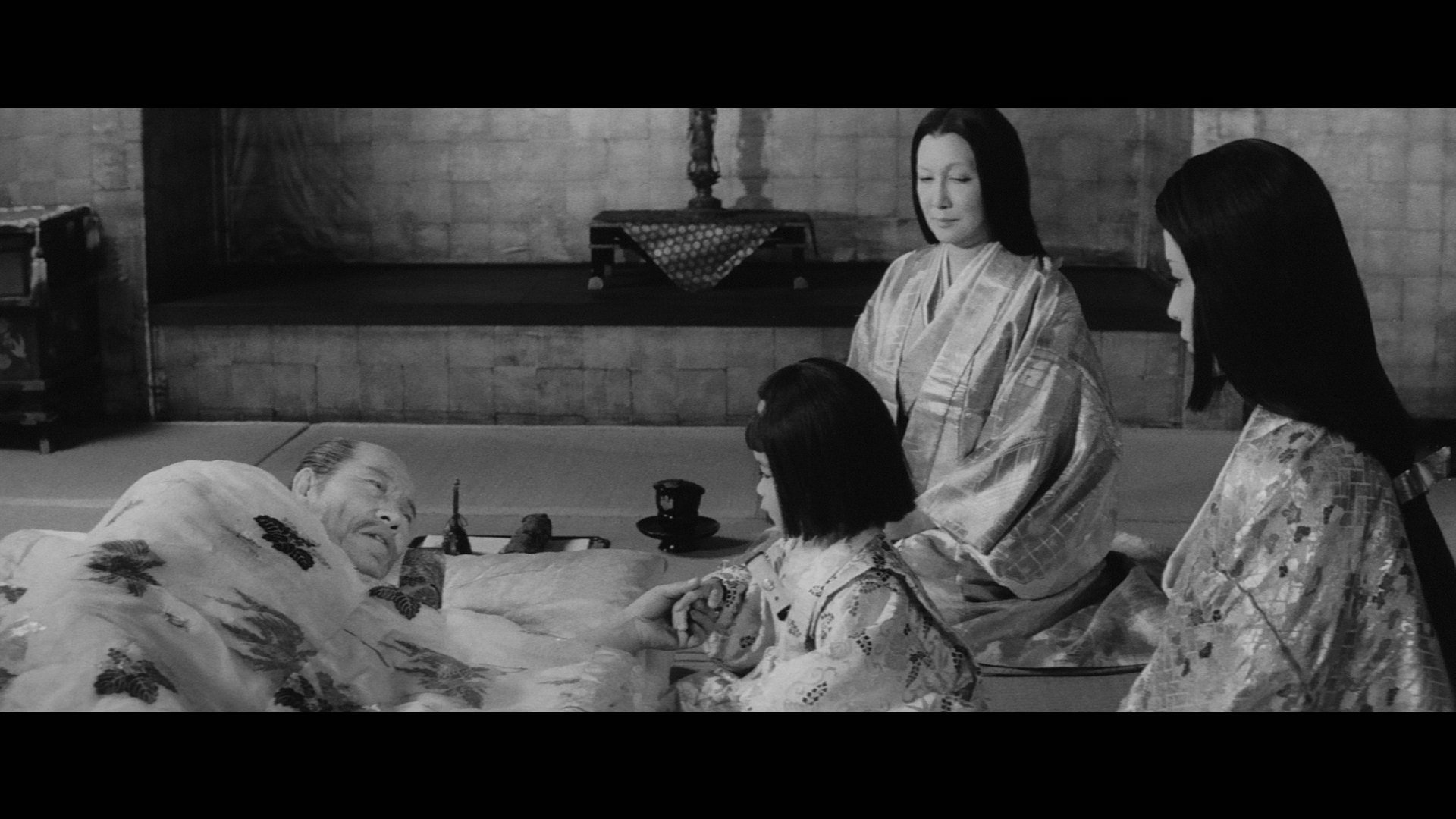 upbringing as an actor's child, his stage work starting as a teen, his switch to film in the mid-'50s, his love of James Dean, his health diagnosis that led to his demise, and this key films that took advantage of his often silent physical presence. Trailers for all three films are also included, and the limited edition comes with a booklet featuring essays by Jonathan Clements on the series and Diane Wei Lewis on the work of Murayama.
upbringing as an actor's child, his stage work starting as a teen, his switch to film in the mid-'50s, his love of James Dean, his health diagnosis that led to his demise, and this key films that took advantage of his often silent physical presence. Trailers for all three films are also included, and the limited edition comes with a booklet featuring essays by Jonathan Clements on the series and Diane Wei Lewis on the work of Murayama.
With the literary Murayama source depleted, we shift gears radically with the next three films in the second Blu-ray set, again spread over two discs. Here Ichikawa switches to the role of Mist Saizō, a long-running fictional ninja under the unified rule of Tokugawa Ieyasu. Here we start with Shinobi: Siege near the end of 1614 and over the next year as irritated generals and starving ronin are multiplying during his imperialistic raids. Prone to sacrificing even his own family members to his own ends, Ieyasu is the next catalyst for a complicated and dogged ninja vendetta carried out by our black-cloaked 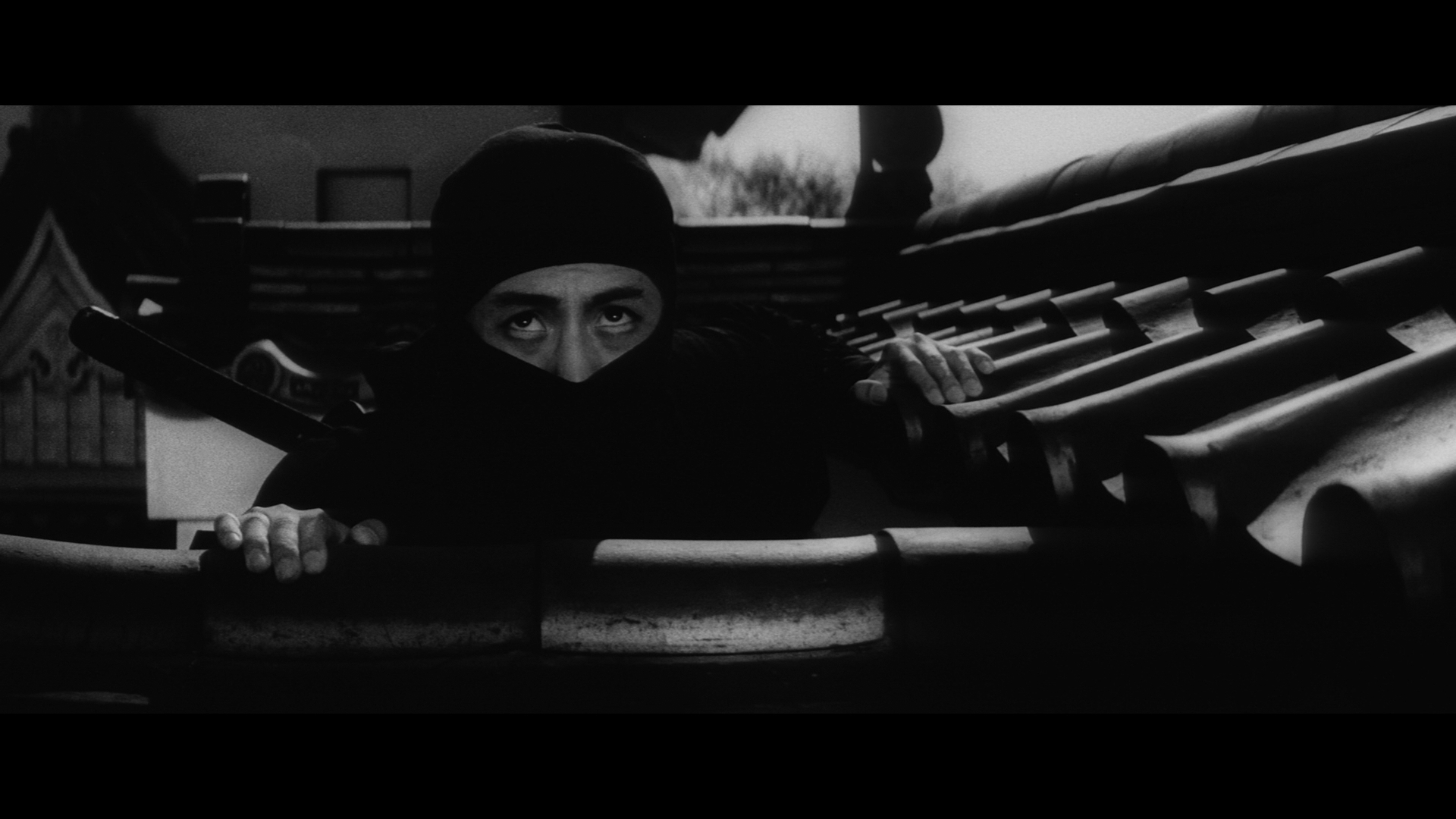 hero who swings through trees and flings metal implements with wild abandon. Over the course of this and the next film, Return of Mist Saizo, he infiltrates and tricks his way through a number of foes to get to the increasingly maniacal shogun. These films were essentially shot as one long narrative (with Return spilling over into 1616), so
hero who swings through trees and flings metal implements with wild abandon. Over the course of this and the next film, Return of Mist Saizo, he infiltrates and tricks his way through a number of foes to get to the increasingly maniacal shogun. These films were essentially shot as one long narrative (with Return spilling over into 1616), so 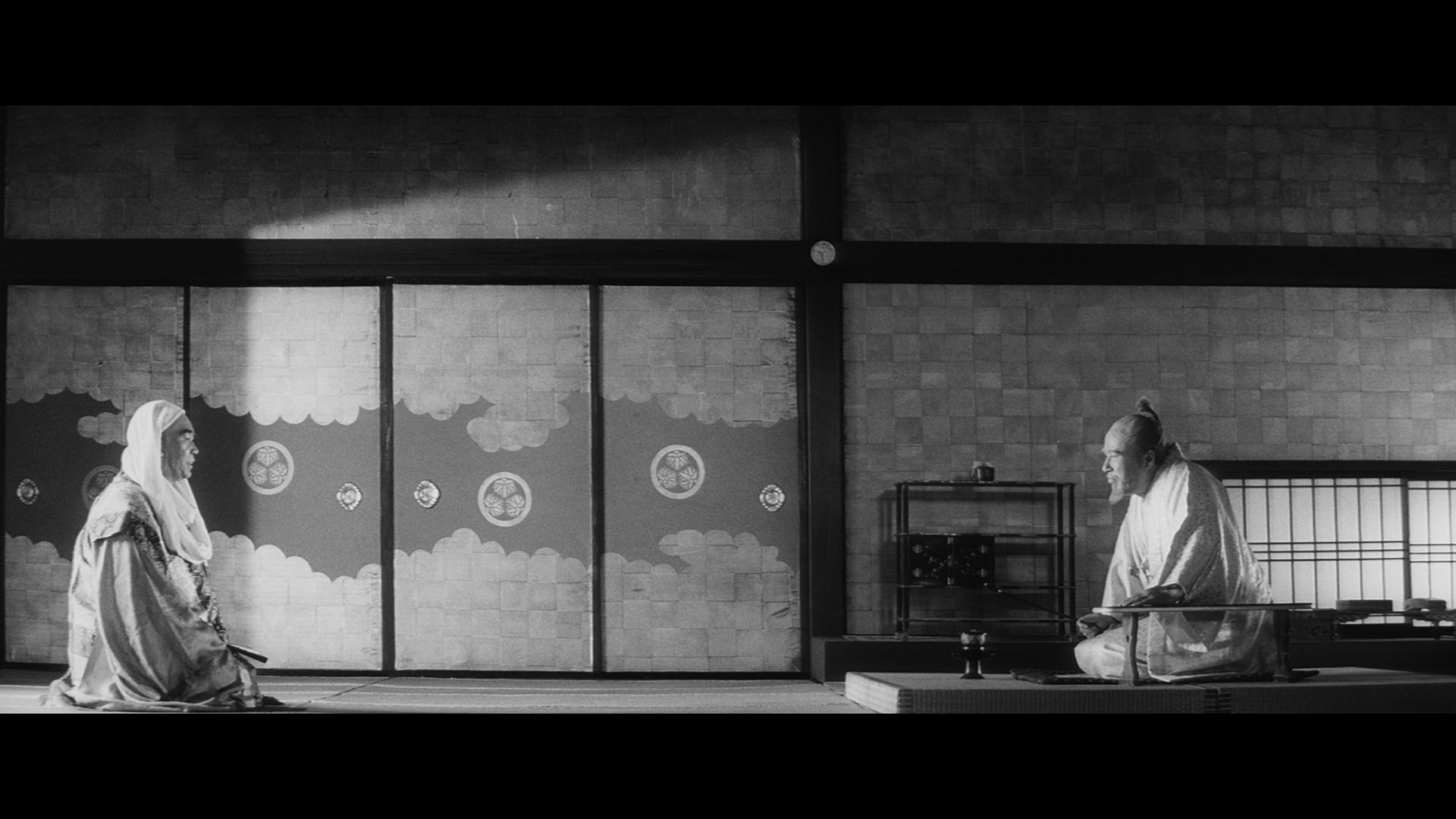 plan on watching them in quick succession or you'll be utterly lost by the end! The battle visuals here are really something else, along with the usual moody interplay of light and shadow giving even the talky plotting scenes an air of foreboding. You get more ninja gags here involving poisoning and so on, plus some novel innovations like an underwater fight you have to see to believe.
plan on watching them in quick succession or you'll be utterly lost by the end! The battle visuals here are really something else, along with the usual moody interplay of light and shadow giving even the talky plotting scenes an air of foreboding. You get more ninja gags here involving poisoning and so on, plus some novel innovations like an underwater fight you have to see to believe.
Finally in Shinobi: The Last Spy, Ichikawa plays Kirigakure Saisuke, the son of the hero from the previous two films; driven by the events that open this story, he trains to become a master ninja and protect his adopted sister. Once again he's used as a pawn between the ruling shogun and schemers with another agenda we only find out fully later on, but you won't have much trouble concentrating during highlights like a legendary (and very dangerous-looking) showdown on rooftops slammed with a very heavy amount of rain. Here the extras are a bit heftier including an interview with Japanese period film historian Taichi Kasuga (24m10s) about Daiei's historical epics, the studio's distinctive features, the shadow cast by its early hit Rashomon, and standout scenes from this series like the great rainy rooftop fight. You also get a select-scene audio commentary on Siege by the always reliable Tom Mes (48m57s), who produced these two sets, covering the meaning of the "shinobi" title, the varying opinions 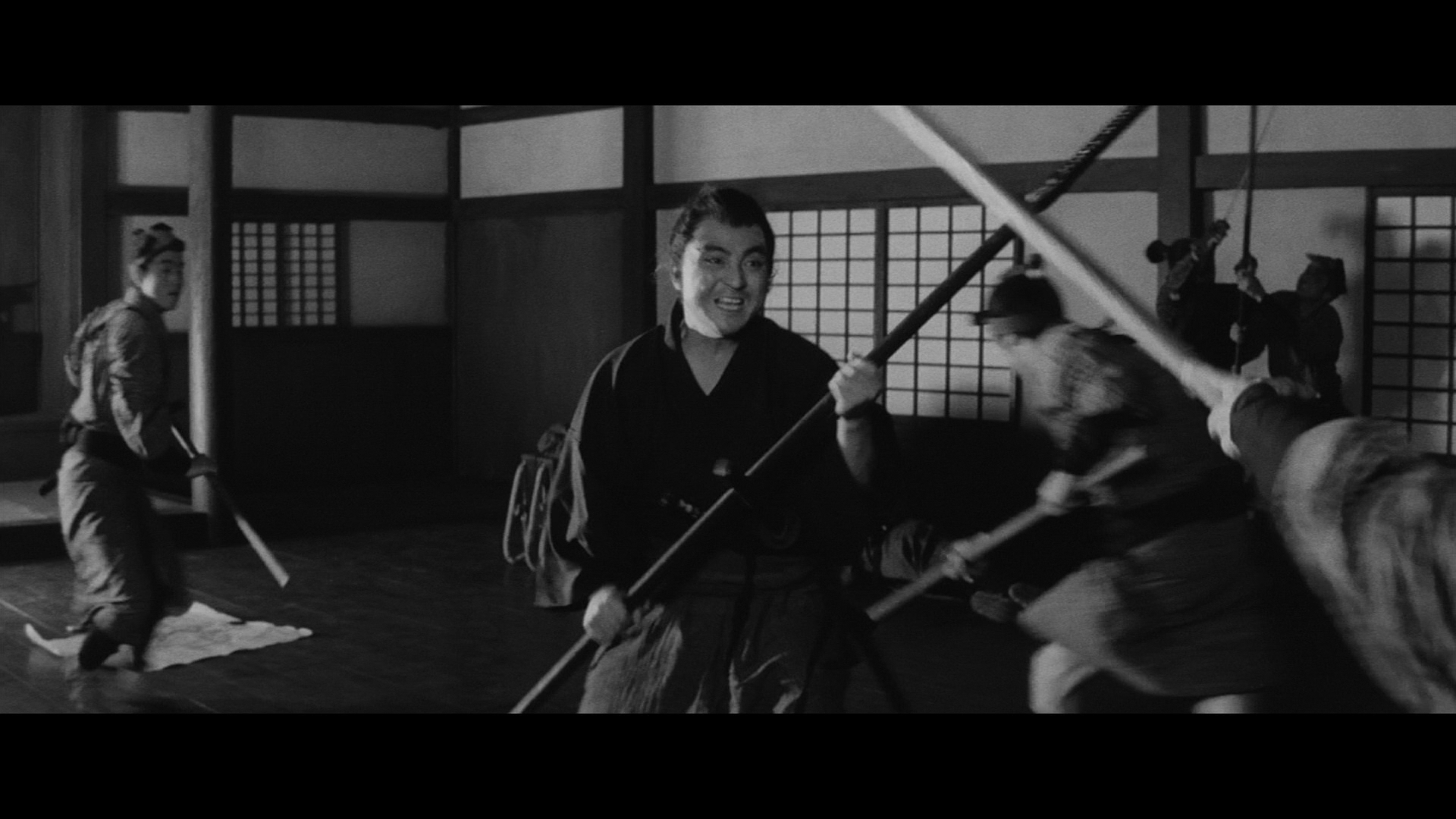 about ninja films and
about ninja films and 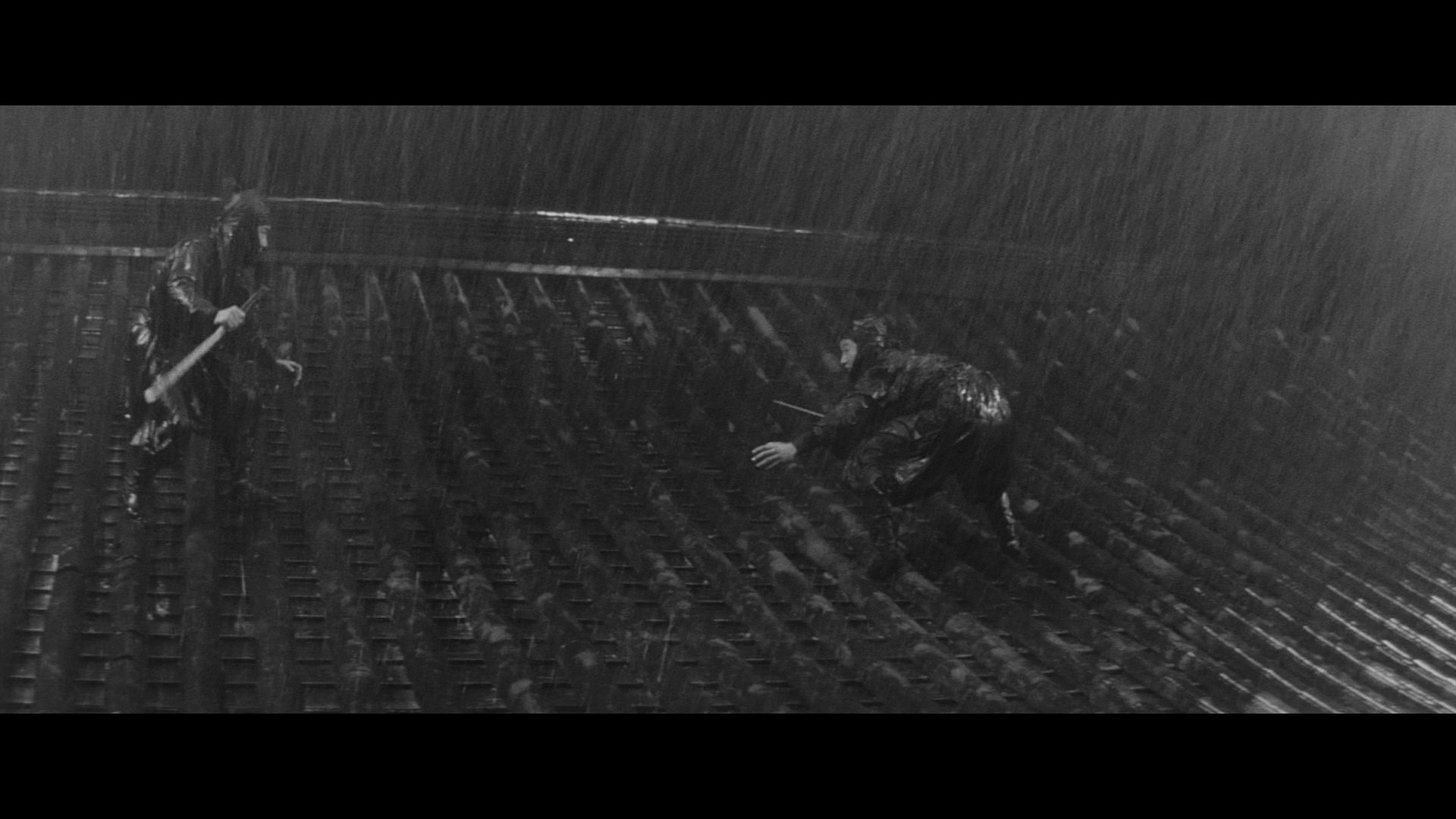 the traditions they involve, the Japanese historical background, the Daiei approach, and much more. Mes also provides "The Faces of Raizo" (4m21s), a visual ode to the actor's output at Daiei around this time before his untimely passing at the age of 37 with highlights including Sleepy Eyes of Death and several Kenji Misumi films. An interview with ninja film scholar Mance Thompson (18m12s) covers the evolution of the ninja film particularly the more nihilistic postwar films which popularized the black-garbed look we still know today. He also studies the frequent narrative tropes of these films, many lifted from history, and explains the honor codes underpinning many of the plot points. Finally in "The Tragedy of Mist Saizo" (11m34s), Hayley Scanlon analyzes the historical turns at the center of the later films, the Saizo character in particular, and the interpretations one could draw from the actions of the characters. Again you get six postcards plus, in the limited edition, a booklet with a new Clements essay catching you up on this stretch in the series. All of these films were available quite a while back on DVD in the U.S. (from AnimEigo) and Japan (from Kadokawa), and the highly upgraded transfers for all six films are excellent and replicate the often high-contrast look of the films, with excellent detail throughout; the Japanese LPCM 2.0 mono tracks also sound solid and feature optional improved English subtitles.
the traditions they involve, the Japanese historical background, the Daiei approach, and much more. Mes also provides "The Faces of Raizo" (4m21s), a visual ode to the actor's output at Daiei around this time before his untimely passing at the age of 37 with highlights including Sleepy Eyes of Death and several Kenji Misumi films. An interview with ninja film scholar Mance Thompson (18m12s) covers the evolution of the ninja film particularly the more nihilistic postwar films which popularized the black-garbed look we still know today. He also studies the frequent narrative tropes of these films, many lifted from history, and explains the honor codes underpinning many of the plot points. Finally in "The Tragedy of Mist Saizo" (11m34s), Hayley Scanlon analyzes the historical turns at the center of the later films, the Saizo character in particular, and the interpretations one could draw from the actions of the characters. Again you get six postcards plus, in the limited edition, a booklet with a new Clements essay catching you up on this stretch in the series. All of these films were available quite a while back on DVD in the U.S. (from AnimEigo) and Japan (from Kadokawa), and the highly upgraded transfers for all six films are excellent and replicate the often high-contrast look of the films, with excellent detail throughout; the Japanese LPCM 2.0 mono tracks also sound solid and feature optional improved English subtitles.
Reviewed on October 9, 2025




 consciousness with 1967's James Bond adventure You Only Live Twice and went on to
consciousness with 1967's James Bond adventure You Only Live Twice and went on to  capture the imaginations of '80s kids with beloved teenage mutant turtles and Cannon Films starring Sho Kosugi, Japanese audiences were already very familiar with everyone's favorite stealthy black-clad killers. One of the most popular out of the gate was Daiei's Shinobi series which, in the finest tradition of Sleepy Eyes of Death, Zatoichi, Lone Wolf and Cub, etc., spread out its hero's blood-spattered tales over a string of films in a compact period of time. In this case it amounted to nine films (sort of, with a reboot of sorts in 2005 and a now mostly lost '60s TV show), six of which made their English-friendly Blu-ray debuts in 2025 from Radiance Films as a pair of collections.
capture the imaginations of '80s kids with beloved teenage mutant turtles and Cannon Films starring Sho Kosugi, Japanese audiences were already very familiar with everyone's favorite stealthy black-clad killers. One of the most popular out of the gate was Daiei's Shinobi series which, in the finest tradition of Sleepy Eyes of Death, Zatoichi, Lone Wolf and Cub, etc., spread out its hero's blood-spattered tales over a string of films in a compact period of time. In this case it amounted to nine films (sort of, with a reboot of sorts in 2005 and a now mostly lost '60s TV show), six of which made their English-friendly Blu-ray debuts in 2025 from Radiance Films as a pair of collections. his dirty
his dirty  work. The first half or so is essentially a standard historical action drama with plenty of twists and double crosses, but once the ninja outfit and weapons get broken out, it's easy to see why this one stood out from the pack.
work. The first half or so is essentially a standard historical action drama with plenty of twists and double crosses, but once the ninja outfit and weapons get broken out, it's easy to see why this one stood out from the pack. with our headstrong ninja
with our headstrong ninja  determined now more than ever to take out the brutal overlord in his increasingly guarded castle. Meanwhile Goemon is being steered unknowingly as part of a larger political power play, which naturally all leads to an elaborate nocturnal siege and a culmination of the saga as a whole. Added into the mix in a pivotal supporting role is Hattori Hanzō (Date), the real-life general and expert fighter whose name should ring a bell for many reasons with Sonny Chiba fans.
determined now more than ever to take out the brutal overlord in his increasingly guarded castle. Meanwhile Goemon is being steered unknowingly as part of a larger political power play, which naturally all leads to an elaborate nocturnal siege and a culmination of the saga as a whole. Added into the mix in a pivotal supporting role is Hattori Hanzō (Date), the real-life general and expert fighter whose name should ring a bell for many reasons with Sonny Chiba fans.  geared for audiences ranging from kids to women to action-loving men, with an obvious lengthy gap during World War II before it escalated in terms of realism and mayhem in the '50s and even led to the "sexy female ninja" variant. You also get an interview with film critic Toshiaki Sato (14m18s) on Raizo Ichikawa including his
geared for audiences ranging from kids to women to action-loving men, with an obvious lengthy gap during World War II before it escalated in terms of realism and mayhem in the '50s and even led to the "sexy female ninja" variant. You also get an interview with film critic Toshiaki Sato (14m18s) on Raizo Ichikawa including his  upbringing as an actor's child, his stage work starting as a teen, his switch to film in the mid-'50s, his love of James Dean, his health diagnosis that led to his demise, and this key films that took advantage of his often silent physical presence. Trailers for all three films are also included, and the limited edition comes with a booklet featuring essays by Jonathan Clements on the series and Diane Wei Lewis on the work of Murayama.
upbringing as an actor's child, his stage work starting as a teen, his switch to film in the mid-'50s, his love of James Dean, his health diagnosis that led to his demise, and this key films that took advantage of his often silent physical presence. Trailers for all three films are also included, and the limited edition comes with a booklet featuring essays by Jonathan Clements on the series and Diane Wei Lewis on the work of Murayama. hero who swings through trees and flings metal implements with wild abandon. Over the course of this and the next film, Return of Mist Saizo, he infiltrates and tricks his way through a number of foes to get to the increasingly maniacal shogun. These films were essentially shot as one long narrative (with Return spilling over into 1616), so
hero who swings through trees and flings metal implements with wild abandon. Over the course of this and the next film, Return of Mist Saizo, he infiltrates and tricks his way through a number of foes to get to the increasingly maniacal shogun. These films were essentially shot as one long narrative (with Return spilling over into 1616), so  plan on watching them in quick succession or you'll be utterly lost by the end! The battle visuals here are really something else, along with the usual moody interplay of light and shadow giving even the talky plotting scenes an air of foreboding. You get more ninja gags here involving poisoning and so on, plus some novel innovations like an underwater fight you have to see to believe.
plan on watching them in quick succession or you'll be utterly lost by the end! The battle visuals here are really something else, along with the usual moody interplay of light and shadow giving even the talky plotting scenes an air of foreboding. You get more ninja gags here involving poisoning and so on, plus some novel innovations like an underwater fight you have to see to believe. about ninja films and
about ninja films and  the traditions they involve, the Japanese historical background, the Daiei approach, and much more. Mes also provides "The Faces of Raizo" (4m21s), a visual ode to the actor's output at Daiei around this time before his untimely passing at the age of 37 with highlights including Sleepy Eyes of Death and several Kenji Misumi films. An interview with ninja film scholar Mance Thompson (18m12s) covers the evolution of the ninja film particularly the more nihilistic postwar films which popularized the black-garbed look we still know today. He also studies the frequent narrative tropes of these films, many lifted from history, and explains the honor codes underpinning many of the plot points. Finally in "The Tragedy of Mist Saizo" (11m34s), Hayley Scanlon analyzes the historical turns at the center of the later films, the Saizo character in particular, and the interpretations one could draw from the actions of the characters. Again you get six postcards plus, in the limited edition, a booklet with a new Clements essay catching you up on this stretch in the series. All of these films were available quite a while back on DVD in the U.S. (from AnimEigo) and Japan (from Kadokawa), and the highly upgraded transfers for all six films are excellent and replicate the often high-contrast look of the films, with excellent detail throughout; the Japanese LPCM 2.0 mono tracks also sound solid and feature optional improved English subtitles.
the traditions they involve, the Japanese historical background, the Daiei approach, and much more. Mes also provides "The Faces of Raizo" (4m21s), a visual ode to the actor's output at Daiei around this time before his untimely passing at the age of 37 with highlights including Sleepy Eyes of Death and several Kenji Misumi films. An interview with ninja film scholar Mance Thompson (18m12s) covers the evolution of the ninja film particularly the more nihilistic postwar films which popularized the black-garbed look we still know today. He also studies the frequent narrative tropes of these films, many lifted from history, and explains the honor codes underpinning many of the plot points. Finally in "The Tragedy of Mist Saizo" (11m34s), Hayley Scanlon analyzes the historical turns at the center of the later films, the Saizo character in particular, and the interpretations one could draw from the actions of the characters. Again you get six postcards plus, in the limited edition, a booklet with a new Clements essay catching you up on this stretch in the series. All of these films were available quite a while back on DVD in the U.S. (from AnimEigo) and Japan (from Kadokawa), and the highly upgraded transfers for all six films are excellent and replicate the often high-contrast look of the films, with excellent detail throughout; the Japanese LPCM 2.0 mono tracks also sound solid and feature optional improved English subtitles.![]()